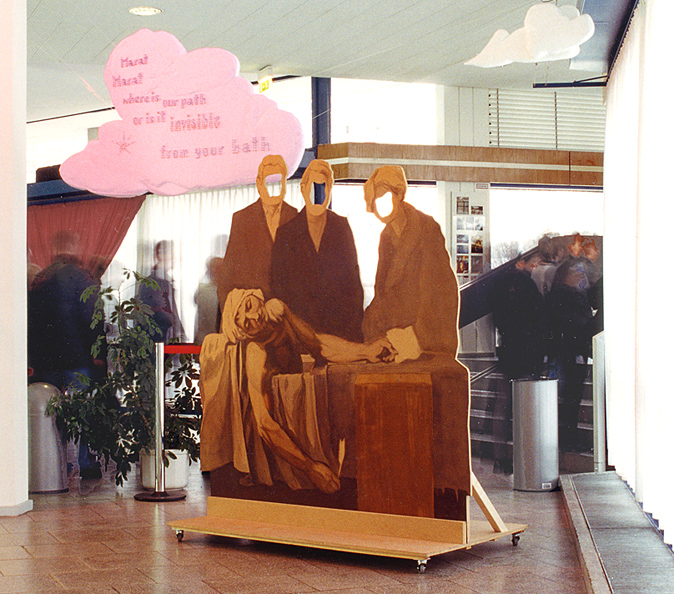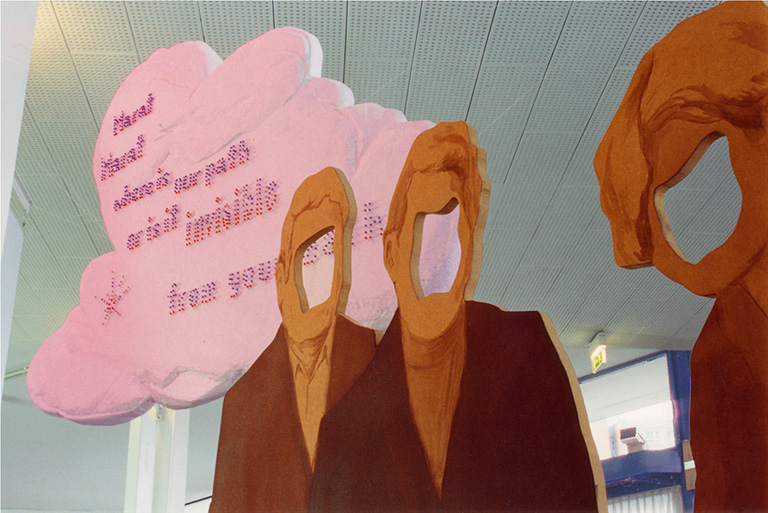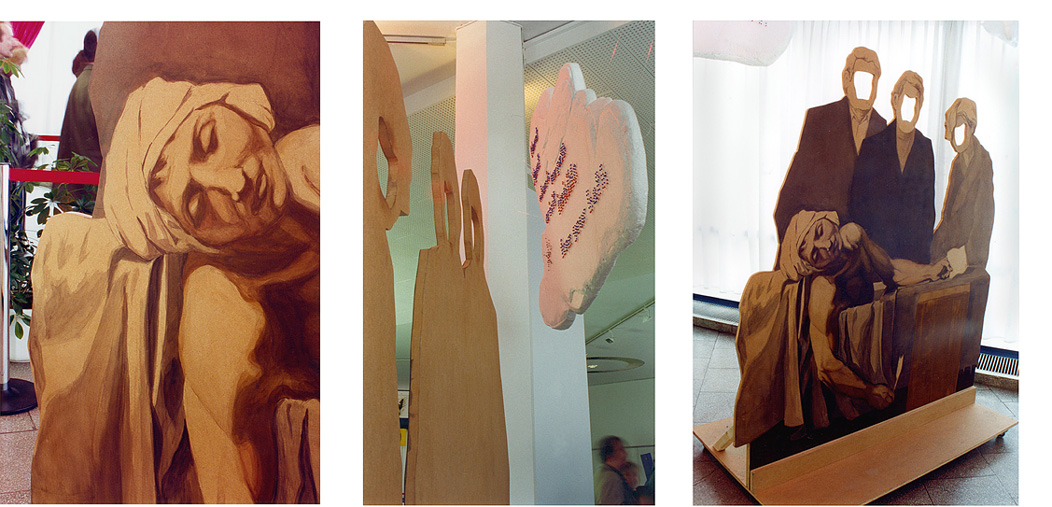Bettina Carl: PATH. installation, 1999-2001
acrylic paint on mdf-board, based on: "La Mort de Marat" by Jaques-Louis David, 1793
styrofoam, pins, lamps. Size of mdf-board ca. 190 x 90 x 60 cm, total size variable, here ca. 400 x 1200 cm
text on the larger cloud: Marat Marat where is our path or is it invisible from your bath, quoted from the English version of
Peter Weiss, "The persecution and the murder of Jean Paul Marat, staged by the theatre group of Charenton hospital, instructed by Monsieur de Sade" (1964)

PATH.
History maybe regarded as a collective formation of knowledge. Throughout this process, images of heroes and
leaders serve as our links to history - regardless whether they look down on us from their pedestals, or whether
they have been turned over and lie on the ground, smashed to pieces.
David's "La Mort de Marat" is an odd example of a political hero depicted: The dead Marat strongly recalls the generic
rendition of the entombment of Christ, and thus the ultimate image of martyrdom: a saviour devoid of any physical
power. Moreover, David even decided to accentuate the rather humiliating circumstances of the revolutionary's death:
The fervent jacobin was actually soaking in a medicinal bath when he received his killer, young Charlotte Corday.
Unlike Jaques Louis David's painting, PATH. invites the viewer to enter the scene. One may pose as an eye-witness
here, however this position won't offer any insights of the site of the crime. On the larger cloud above, in red light,
a desperate call for guidance is to be read: Marat Marat where is our path or is it invisible from your bath.
This plea is recurring in Peter Weiss' play; an answer, however, is not being offered.

